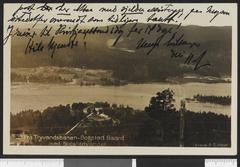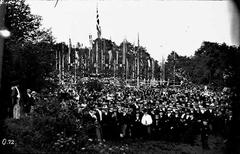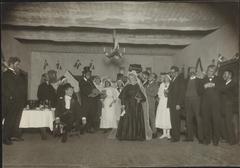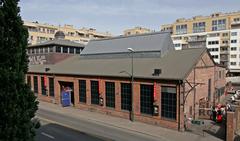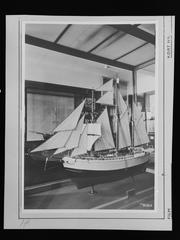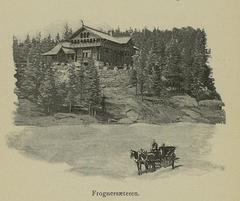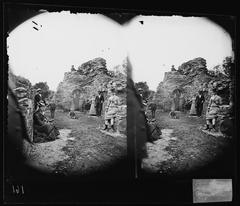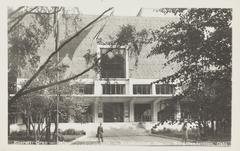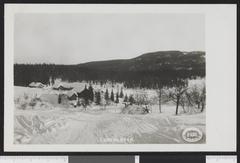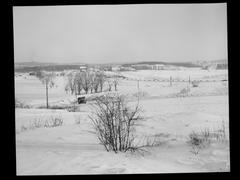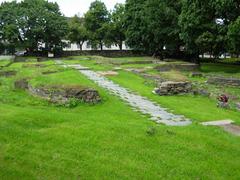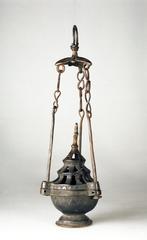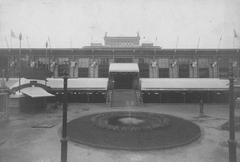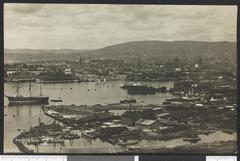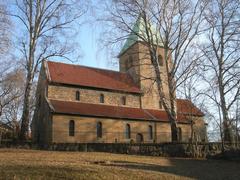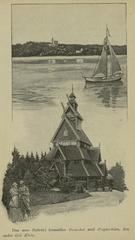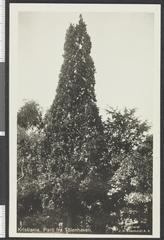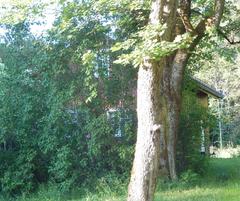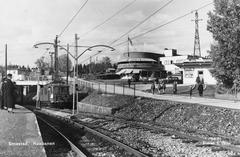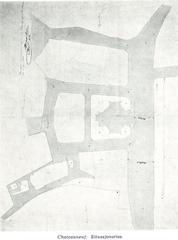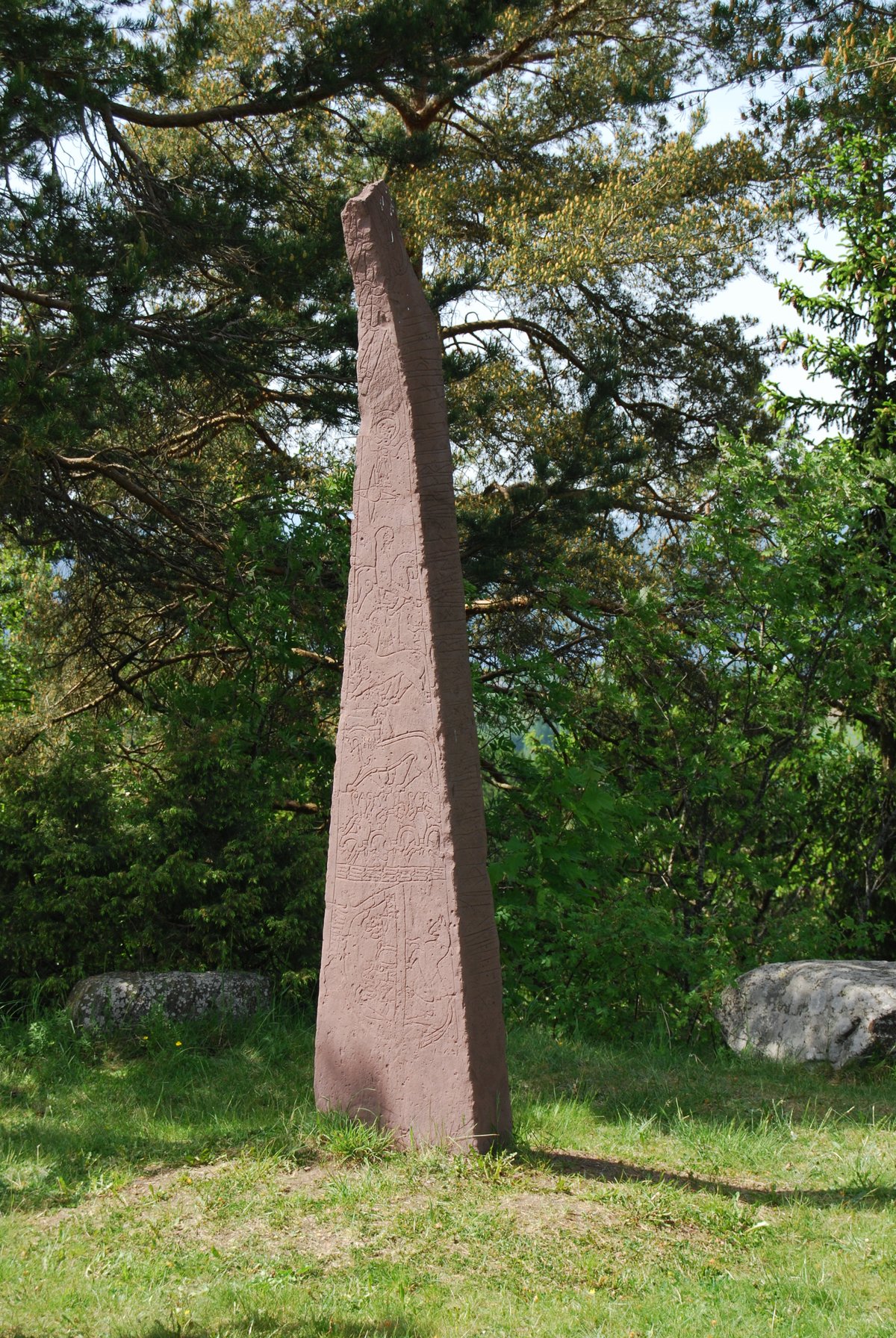
Dynna Stone: Visiting Hours, Tickets, and Historical Significance in Oslo
Date: 03/07/2025
Introduction
The Dynna Stone is one of Norway’s most significant Viking Age monuments—a striking testament to the nation’s religious and cultural transformation during the 11th century. Now housed at the Norwegian Museum of Cultural History in Oslo, this monumental runestone offers visitors a unique glimpse into the era when Norse paganism gave way to Christianity. Its intricate carvings, runic inscriptions, and early Christian iconography make it an essential stop for anyone interested in Viking history, art, or religious heritage.
This guide covers the Dynna Stone’s historical background, cultural context, practical visitor information (hours, tickets, accessibility), nearby attractions, and frequently asked questions. Whether you’re a history enthusiast or a curious traveler, you’ll find all you need to plan your visit and deepen your understanding of this remarkable artifact.
Table of Contents
- Introduction
- Historical and Cultural Significance
- Visiting the Dynna Stone
- Visitor Experience: Digital & Guided Options
- Frequently Asked Questions (FAQs)
- Additional Resources & Official Links
- Conclusion & Final Tips
Historical and Cultural Significance
Discovery and Relocation
Originally discovered at Dynna farm in Gran, Oppland (about 70 km north of Oslo), the Dynna Stone was moved to Oslo to protect it from the elements and make it more accessible to the public. Today, it stands in the Norwegian Museum of Cultural History (Norsk Folkemuseum), where it is a centerpiece of the Vikingr exhibition.
Artistic Features and Iconography
The Dynna Stone stands nearly 3 meters (about 10 feet) tall and is crafted from pinkish-red sandstone. Its unique triangular shape features runic inscriptions along one edge and a carved Nativity scene on the broad front face. This is Norway’s earliest known runestone to depict Christian themes, with images including the Star of Bethlehem and the Three Wise Men—a rare blend of Viking artistic tradition and Christian iconography.
Runic Inscriptions and Commemoration
The runic inscription, carved in a transitional script between Elder and Younger Futhark, commemorates a woman named WoduridaR. Her mother, WiwaR, erected the stone in her memory, marking a rare example of matrilineal tribute in Viking society. The text also references the construction of a bridge—a common Christian act of charity believed to aid the soul of the deceased.
Social and Religious Context
Created during a time of profound change in Norway, the Dynna Stone reflects the cultural negotiation between old Norse beliefs and new Christian customs. The blend of runic script and Christian imagery captures a society in transition, making the stone a vital source for historians and archaeologists.
Visiting the Dynna Stone
Location & Accessibility
- Museum: Norwegian Museum of Cultural History (Norsk Folkemuseum)
- Address: Museumsveien 10, 0287 Oslo, Norway
The museum is fully wheelchair accessible. Digital displays, audio guides, and guided tours are available to enhance the experience for all visitors.
Opening Hours
- Summer (May–September): Daily, 10:00 AM – 6:00 PM
- Winter (October–April): Tuesday–Sunday, 11:00 AM – 4:00 PM (Closed Mondays except public holidays)
Tickets & Pricing
- Adults: 120 NOK
- Seniors/Students: 90 NOK
- Children under 18: Free
- Family tickets: Available
- Oslo Pass holders: Free entry
Tickets include access to all permanent and special exhibitions, including the Vikingr exhibition.
Travel Tips
- The museum is easily accessible by Oslo’s public transport (buses and trams from the city center).
- Guided tours are available and recommended for deeper insight—check the museum website for schedules.
- Photography is permitted without flash.
- Large bags must be stored in provided lockers.
Nearby Attractions
- Viking Ship Museum (temporarily closed for renovations, but some exhibits may be available)
- Akershus Fortress
- Oslo Cathedral
- Historical Museum (Historisk museum, Frederiks gate 2)
Visitor Experience: Digital & Guided Options
The museum offers interactive digital displays and photogrammetric models, allowing for close-up exploration of the Dynna Stone’s details and inscriptions. Audio guides and guided tours in English are available seasonally, and museum staff are happy to assist international visitors.
Frequently Asked Questions (FAQs)
Q: Do I need a ticket to see the Dynna Stone?
A: Yes, general admission to the Norwegian Museum of Cultural History includes access to the Dynna Stone.
Q: What are the museum’s visiting hours?
A: Summer: Daily 10:00 AM–6:00 PM. Winter: Tuesday–Sunday 11:00 AM–4:00 PM. Closed Mondays except public holidays.
Q: Is the museum accessible to visitors with disabilities?
A: Yes, the museum is fully wheelchair accessible and offers digital and audio aids.
Q: Can I take photos?
A: Photography without flash is allowed.
Q: Are guided tours available?
A: Yes, guided tours focusing on Viking history and the Dynna Stone are available; advance booking is recommended.
Q: How do I get there from Oslo city center?
A: The museum is around 20 minutes by public transport (tram or bus) from central Oslo.
Additional Resources & Official Links
- Norwegian Museum of Cultural History official website
- VisitOSLO: Dynna Stone Visiting Guide
- Museum of Cultural History, University of Oslo
- Girl with the Passport: Norway Travel Guide
- Czech the World: Norway Travel Guide
- The Peculiar Brunette: Rune Stones Meanings
Conclusion & Final Tips
Visiting the Dynna Stone is an enriching journey into Norway’s Viking past and its transition to Christianity. Its unique blend of Norse and Christian art, poignant family commemoration, and cultural symbolism make it a highlight of Oslo’s historical offerings. Located within the Norwegian Museum of Cultural History, the stone is accessible year-round and supported by a range of visitor services, including guided tours and digital enhancements.
For the most up-to-date information on visiting hours, tickets, and special exhibitions, consult the museum’s official website. Enhance your experience by exploring nearby historical sites and using digital resources like the Audiala app for interactive guides.
Plan your trip, immerse yourself in Norway’s cultural heritage, and let the Dynna Stone’s story enrich your understanding of the Viking Age.
Sources
- Discover the Dynna Stone: Visiting Hours, Tickets, and Oslo Historical Site Guide, 2025, Norwegian Museum of Cultural History (https://norskfolkemuseum.no/en)
- Visiting the Dynna Stone: Explore Oslo’s Historic Christian Runestone and Museum Exhibit, 2025, Museum of Cultural History Oslo (https://norskfolkemuseum.no/en)
- Dynna Stone Visiting Guide: Historical Significance, Visiting Hours, Tickets & More, 2025, VisitOSLO (https://www.visitoslo.com/en/activities-and-attractions/10-suggestions/outside-oslo/)
- Dynna Stone Visiting Hours, Tickets & Guide to Oslo’s Historic Runic Monument, 2025, Historical Museum Oslo (https://www.khm.uio.no/english/)




